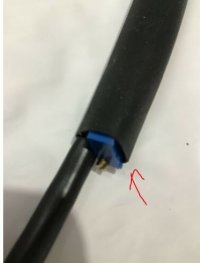507PowerWall
Member
- Joined
- Jun 6, 2020
- Messages
- 103
Hi All,
I just ordered a two CT clamps rated 100A / 50mah ...
... to connect them in series to cover both hots..... and suppously this will allow us to read properly the whole house consumption.....
But I was checking this guy dual ct clamp "Calibrated" and "Adjustable":
no afialiated link:
Here
Here's the adjuster:

Question, I was planing to get cts and test load and reading at home ... but in my noob environment just doing the series connection will not be calibrated and probable will not read load right... I know will not be perfect reading but a 0.5% deviation will be ok?
The cable comes with :
"The limiter cable is a special 2 coil electronically calibrated cable with a circuit to always allowapproximately7 watts down, and TWO coils to monitor the standard unbalanced load."
newbies should go for the cali and adj dual CT ?
I'm planing to test by myself and if I cant make it... do the other route....
I leave it here just in case other noobs are planing the same....
and would like to here ur experiences and input about dual CT
CG.
I just ordered a two CT clamps rated 100A / 50mah ...
... to connect them in series to cover both hots..... and suppously this will allow us to read properly the whole house consumption.....
But I was checking this guy dual ct clamp "Calibrated" and "Adjustable":
no afialiated link:
Here
Here's the adjuster:

Question, I was planing to get cts and test load and reading at home ... but in my noob environment just doing the series connection will not be calibrated and probable will not read load right... I know will not be perfect reading but a 0.5% deviation will be ok?
The cable comes with :
"The limiter cable is a special 2 coil electronically calibrated cable with a circuit to always allowapproximately7 watts down, and TWO coils to monitor the standard unbalanced load."
newbies should go for the cali and adj dual CT ?
I'm planing to test by myself and if I cant make it... do the other route....
I leave it here just in case other noobs are planing the same....
and would like to here ur experiences and input about dual CT
CG.


